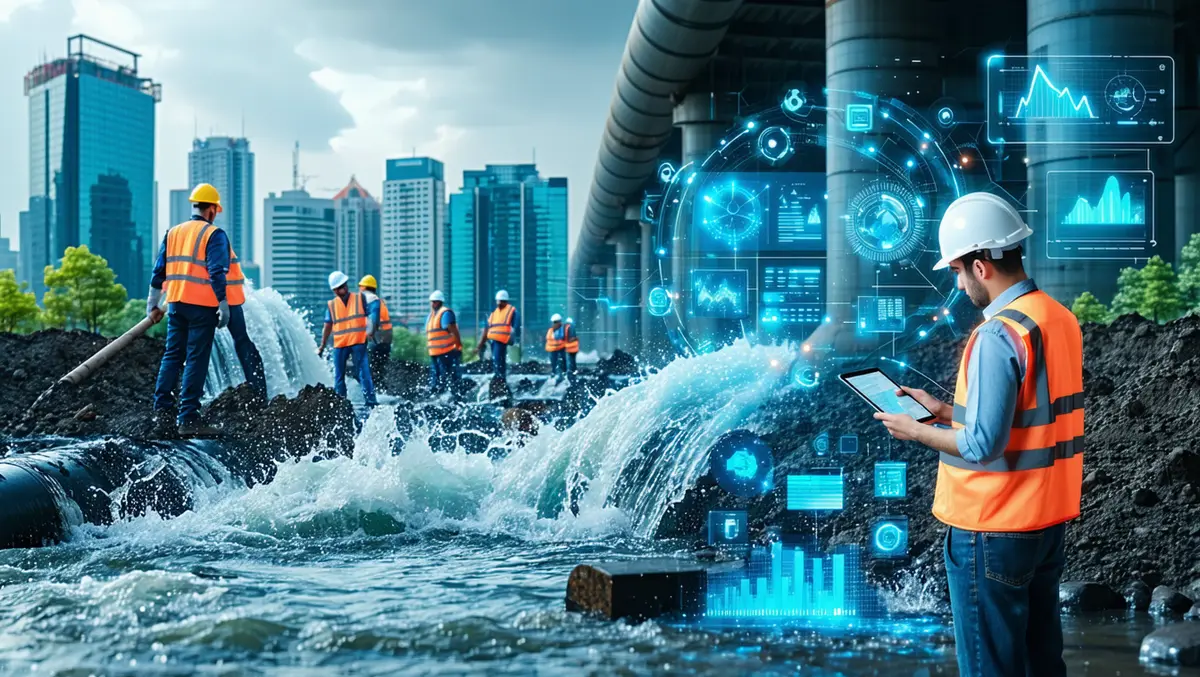
IoT tech combats UK's costly water leakage crisis
Water leakage in the UK presents significant financial, environmental, and operational issues, and technological solutions are being explored to address the problem.
Over 1 trillion litres of water were estimated to have been lost last year in the UK due to leaks, with an average of 51 litres per person wasted daily in England and Wales, according to Ofwat. These losses are mainly attributed to aging infrastructure where corroded pipes, weather-related damage, and gradual structural shifts contribute to undetected leaks. This situation leads to costly repairs and rising insurance premiums for property owners, as well as wasted resources affecting the environment.
Detecting leaks before they cause significant damage is challenging, particularly in older buildings where leaks may develop unnoticed under floors or behind walls. Traditional detection methods such as visual inspections or waiting for signs of damage are reactive and often come too late. By the time a leak becomes visible, damage may have already occurred, leading to expensive remediation efforts.
The UK's aging infrastructure exacerbates this issue, with many properties built decades ago being highly susceptible to undetected leaks. Property managers and council responsible for large portfolios of such buildings face increasing pressure to find more efficient and accurate ways of detecting leaks.
IoT technology and sub-gigahertz connectivity present a promising solution to the issue of water leaks. These technologies involve deploying sensors that monitor moisture levels, flow rates, and pipe integrity, allowing for the detection of leaks at their inception, long before they are visible. These sensors can be installed in both new and existing properties, making the technology applicable across various types of buildings.
Low Power Wide-Area Network (LPWAN) connectivity, functioning below 1GHz, provides several advantages over traditional cellular and Wi-Fi networks in this context. Sub-gigahertz technologies enable long-range communication, better penetration of building materials like steel and concrete, and reliable underground transmission. Moreover, these technologies consume less power, making them durable and suitable for long-term installations.
Beyond detection, IoT and sub-gigahertz systems enable automated response mechanisms such as triggering electro-mechanical valves to shut off water supplies upon leak detection. This can be done remotely using an application, offering precise control over water flow and presenting a proactive strategy to a traditionally reactive problem.
The transition from manual to automated monitoring yields considerable benefits for property managers and insurers. IoT-enabled sensors continuously monitor water systems, providing real-time alerts for swift interventions, thereby avoiding the escalation of minor issues into significant ones. This reduces the need for regular physical inspections and allows for the management of multiple properties remotely.
In the insurance sector, advanced leak detection technologies are increasingly recognized for their ability to prevent leaks and reduce claims. Insurers in the UK currently pay an estimated GBP £1.8 million daily for water-related claims. By installing or retrofitting these systems, insurers can lower the frequency and severity of claims, potentially leading to reduced premiums for property owners.
IoT and sub-gigahertz connectivity also contribute significantly to environmental conservation. With climate change and projections indicating an increased demand for water, technologies that moderate usage and prevent wastage are crucial. For instance, IoT sensors can detect issues in historical buildings, where hidden leaks may otherwise lead to serious damage.
Gareth Mitchell, UK Partner Manager, Heliot Europe, and Andy Welch, Business Development Manager, LeakSafe, highlight how these solutions can transform leak detection, particularly in older properties that are challenging to maintain. They note the precision of these technologies in pinpointing leaks, whether in old listed buildings or new developments, aiding effective conservation efforts and protecting a dwindling resource.
IoT and sub-gigahertz connectivity represent a modern approach to addressing water leakage issues in the UK. Embracing these technologies can help property managers and insurers mitigate risks, reduce costs, and conserve water resources.
.webp)

